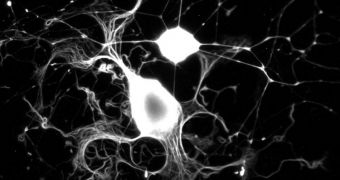In a paper published in the May 6 issue of the top journal Nature Neuroscience, experts demonstrate that brain networks have the ability to switch the frequencies at which they operate, in order to avoid the jamming of electrical signals through busy interactions.
Everyone knows that the human brain is tremendously complex, and that it contains around 100 billion neurons. These nerve cells are interconnected by around 100 trillion synapses, an extremely massive number. Each neuron sends or receives electrical signals nearly constantly.
Understandably, there are certain hotspots in the brain where several neural networks meet up with each other, creating a busy intersection of sorts. In order to ensure that signals do not get bogged down in the intense traffic – like cars in a traffic jam – the networks change the frequency of signals they use.
The new study was conducted using a brain-imaging technique called magnetoencephalography (MEG), which can detect the frequency at which neurons operate. Other methods, such as Magnetic Resonance Imaging (MRI), analyze blood flow through the brain to construct images.
“It only allows us to track brain cell activity indirectly, and it is unable to track activity that occurs at frequencies greater than 0.1 hertz, or once every 10 seconds,” Washington University neurologist and study team member, Maurizio Corbetta, says of MRI.
“We know that some signals in the brain can cycle as high as 500 hertz, or 500 times per second,” he goes on to say. “We found that different brain networks ticked at different frequencies, like clocks ticking at different speeds,” explains the lead author of the study, Joerg Hipp.
The expert holds joint appointments, at the University Medical Center in Hamburg-Eppendorf, and the University of Tübingen, in Germany. He says that the new study used 43 healthy volunteers, who underwent MEG analyses, LiveScience reports.
This imaging technique can analyze signals traveling at frequencies of up to 100 hertz. “Many neurological and psychiatric conditions are likely to involve problems with signaling in brain networks,” Corbetta argues.
“Examining the temporal structure of brain activity from this perspective may be especially helpful in understanding psychiatric conditions like depression and schizophrenia, where structural markers are scarce,” he concludes.

 14 DAY TRIAL //
14 DAY TRIAL //